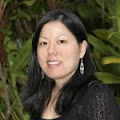First Presenter was from Ambient Insight. United States is number one for mobile device purchases. Carriers are getting into e-learning, devices coming pre-loaded with activities.
Health care industry - lots of apps for health education
 Location-based games - started with museums, art galleries and tourist attractions. Now government are developing apps. Examples shared:
Location-based games - started with museums, art galleries and tourist attractions. Now government are developing apps. Examples shared:
1. Cyclopedia - Cyclopedia uses the iPhone camera, compass and GPS together to create an augmented reality of the world by overlaying Wikipedia information over the viewfinder.
2. Wikitude - Augmented reality world browser.
Health care industry - lots of apps for health education
 Location-based games - started with museums, art galleries and tourist attractions. Now government are developing apps. Examples shared:
Location-based games - started with museums, art galleries and tourist attractions. Now government are developing apps. Examples shared:1. Cyclopedia - Cyclopedia uses the iPhone camera, compass and GPS together to create an augmented reality of the world by overlaying Wikipedia information over the viewfinder.
2. Wikitude - Augmented reality world browser.
Second Presenter was from Emantras - E-Learning Training Solutions. He (Lois Strikoff) shared the idea of "Waiting for Superman" which is a book and also a movie, this is the first I've heard about this:
http://www.waitingforsuperman.com/synopsis He also shared the companies mobile learning app, mobl21
He also shared the companies mobile learning app, mobl21
The most valuable portion for me was the location-based applications since we'll begin working on the huaka‘i branch activity. I was looking at "check-in" type apps like foursquare but also like the idea of the browser idea.
The roadmap shared by Lois was a wonderful visual for mobile development. I like the idea of depicting the process in this way.

Comments